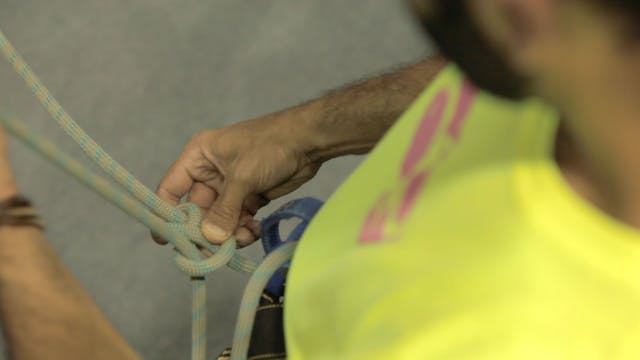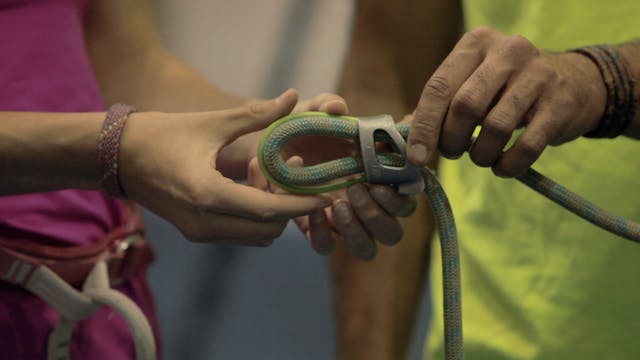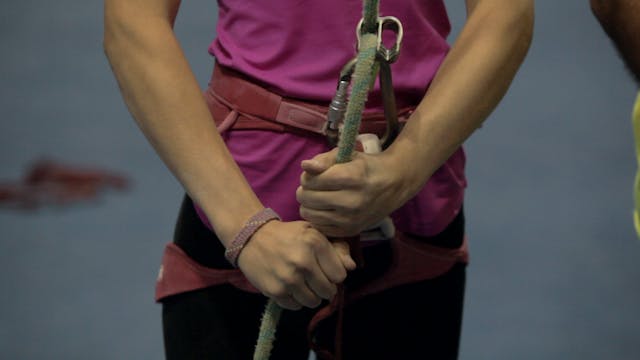Gym Top Rope Climbing: 2. How to Correctly Put on a Climbing Harness
Gym Top Rope Climbing
•
1m 41s
In this video we review how to correctly put on a climbing harness to ensure both the climber and the belayer are properly secured.
Step 1: Place your feet into both leg loops, as if you were stepping into pants. Make sure the waist loop above the leg loops, and pull the harness up above your hip bones.
Step 2: Once the harness is above your hip bones, tighten the harness strap tightly so only a few fingers fit snugly between your body and the waist strap.
Step 3: Always make sure to immediately double-back the harness, by threading the waist strap back through the first hole of the buckle. You’ll notice that the harness strap forms a “C” on the buckle for “closed”. This is required every time!
Step 4: Tighten the leg loops using the same finger test as the waist strap, and ensure your leg loops are also double backed.
Regardless of what style of harness you use, always make sure the straps are double-backed.
We hope you found this video helpful. Feel free to comment below with questions or thoughts!
Please remember, climbing is inherently dangerous. Climb at your own risk.
Up Next in Gym Top Rope Climbing
-
Gym Top Rope Climbing: 3. How to Tie ...
In this video we review how to correctly tie into your harness as the climber.
Step 1: Create enough rope length with which to tie in. The ideal rope length should measure approximately 1 arm length and across your torso.
Step 2: Tie a figure eight knot as demonstrated in the video above.
... -
Gym Top Rope Climbing: 4. Belay Devic...
In this video we review the belay device fundamentals required for the belayer. To begin, you’ll need a locking carabiner and a belay device.
If using a passive belay device, which requires the belayer to manually arrest the climbers fall, see below (and the video) for instructions:
Step 1:...
-
Gym Top Rope Climbing: 5. How to Top ...
In this video we review how to top rope belay. To begin, position your hands by grabbing onto the rope with your non-dominant hand (feeler hand) about chin level, and your dominant hand (brake hand) three fingers below the belay device.
Step 1: The feeler hand and the brake hand move past each...


